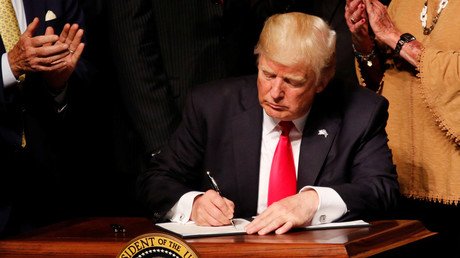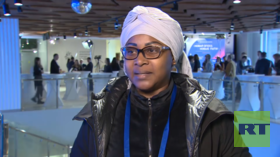Low-cost phone & internet federal programs waste millions – report

The federally-funded program Lifeline is designed for low-income Americans, but now it’s under fire for practices that allegedly include massive waste of taxpayer money. The FCC has expressed its intent to fix the issues in response.
The Government Accountability Office released a monumental report with information on the federally funded Lifeline welfare program Thursday. According to government auditors, $137 million a year is going to fake, dead and ineligible people.
The program, which offers a monthly credit at a cost of $9.25, was initially established during the Reagan administration. Lifeline’s goal is leveling the playing field between those who have access to important services in communication, and those who don’t, as reported by the Washington Post.
Over 12 million households received $1.5 billion in subsidies in 2016 from Lifeline, according to the report.
The program is funded by fees that are added to the phone bills of all US consumers. It went through some changes in 2016 and was expanded to include mobile broadband and residential internet as services that can be used with the credit, opposed to just helping with the phone side of the program.
Lifeline has for years come under scrutiny from both sides of the political aisle. This report was commissioned by Senator Claire McCaskill (D-Missouri).
“GAO was unable to confirm whether about 1.2 million individuals of the 3.5 million it reviewed, or 36 percent, participated in a qualifying benefit program, including Medicaid, as was stated on their Lifeline enrollment application,” the report said.
It is still not clear how many ineligible subscribers may be in the remaining 8.9 million that the GAO did not include in the report. While matching it against social security and performing an analysis of Lifeline’s database, GAO discovered that there were 5,500 duplicate beneficiaries, and 5,400 who had been dead for longer than a year. $1.2 million is wasted on these individuals each year.
Nearly half of recipients in the states of Georgia and Michigan, who enrolled in the Lifeline program through Medicaid or food stamps, had questionable eligibility for discounts included in the program, the Washington Post reported.
Government auditors actually posed as applicants of the Lifeline program and gave falsified information to 19 telecom carriers and a dozen of the requests were approved. This indicated that the companies were not sufficiently screening the applicants, according to the report, as reported by the Washington Post.
A July 2016 order by the FCC requested that a third party national eligibility verifier be created to be in charge of subscriber eligibility by 2019.
“Lifeline continues to be the only government program that helps low-income Americans afford phone and internet service - essential for gaining employment, learning, expressing our views, staying in contact and keeping informed,” said Carmen Scurato, policy director at the National Hispanic Media Coalition.
Mignon Clyburn, an FCC Democrat, said, “Some may use the limited findings of this report as justification to cut back on the Lifeline program even further, but that would be catastrophic for those most in need.”
FCC Chairman Ajit Pai said an investigation that he led last year will be upheld, the Post reported.














